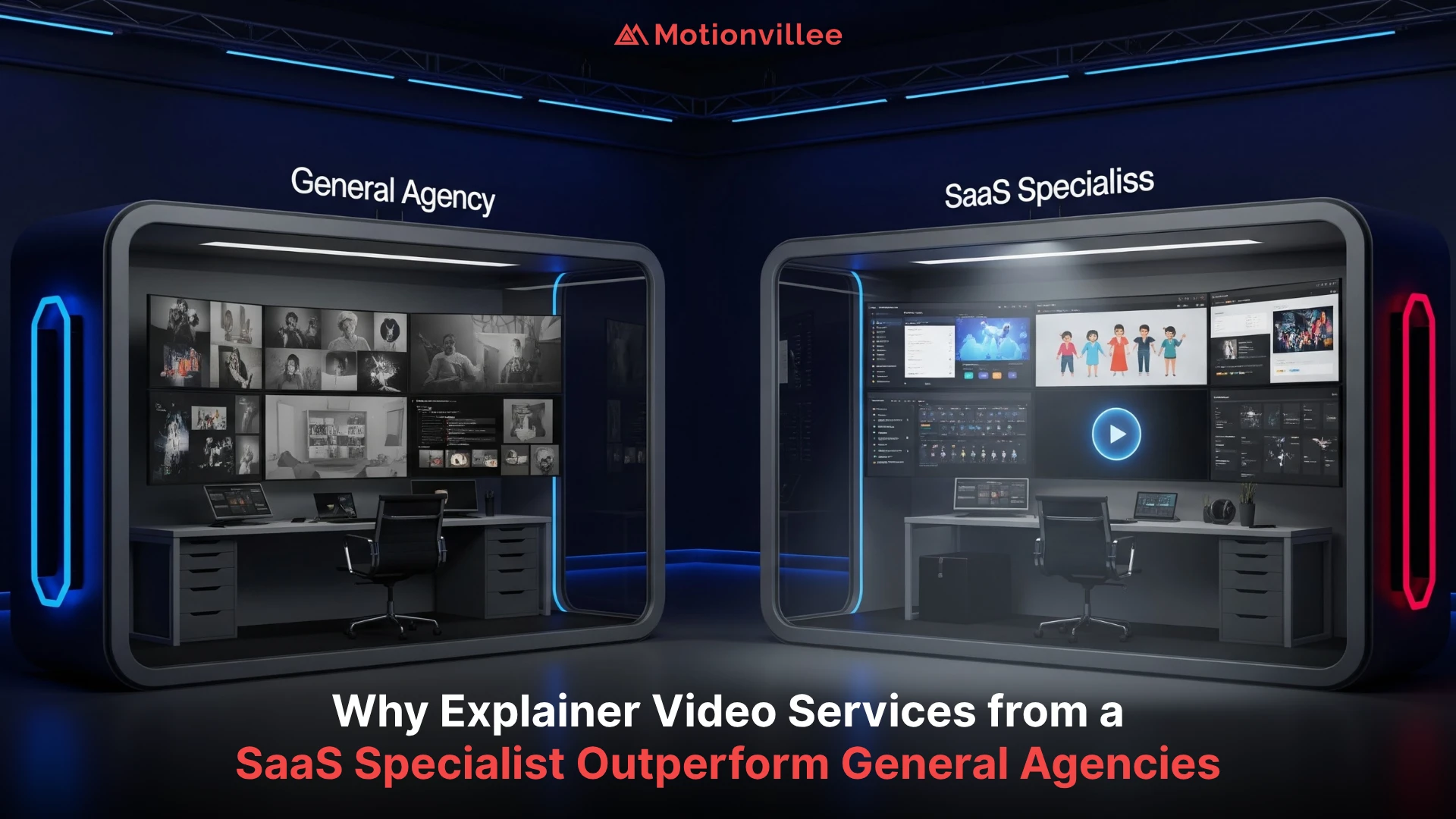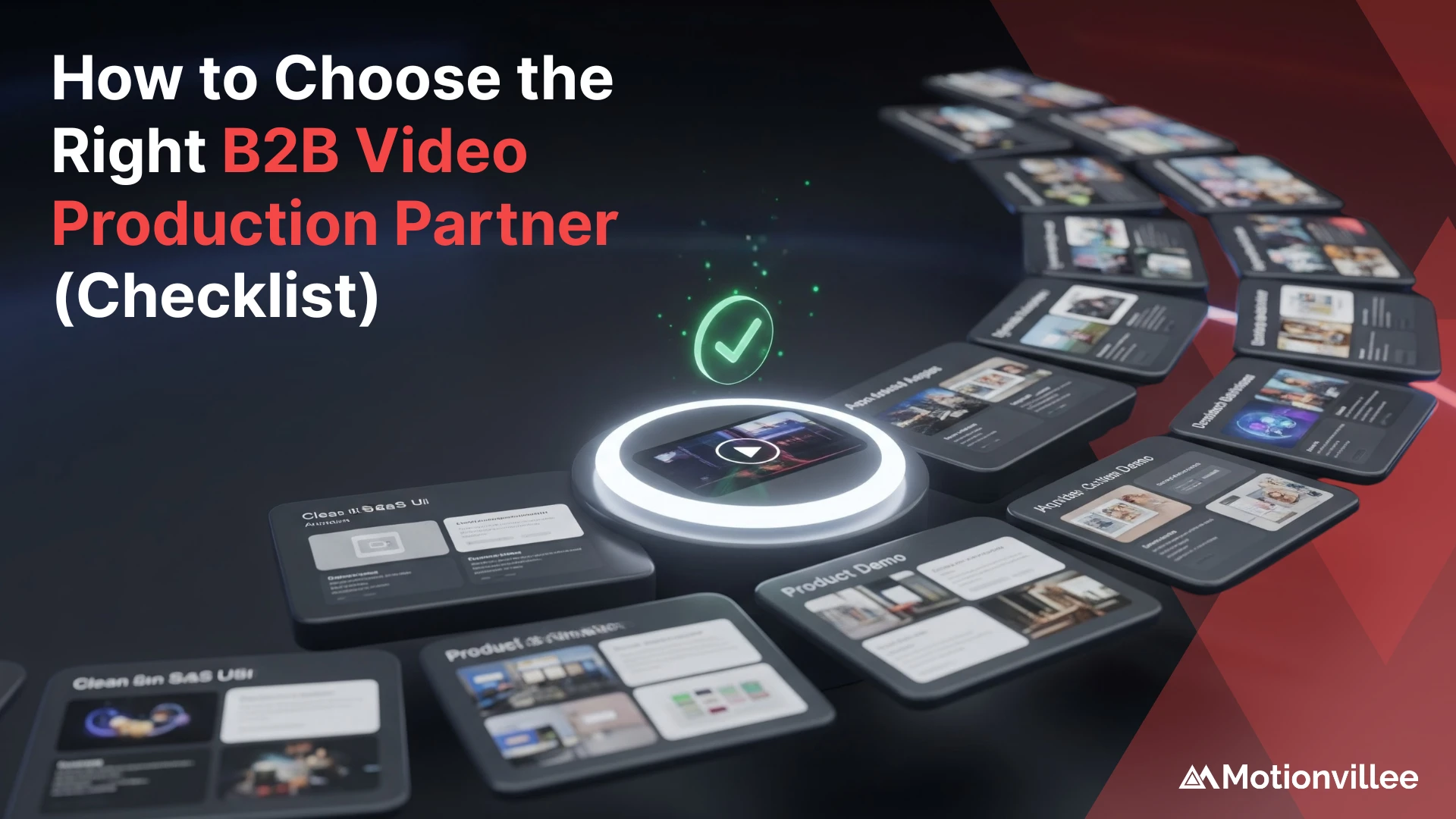Why Explainer Videos Need Measurement, Not Just Views
You invest in explainer videos to make your message clear. But without measuring performance, it’s hard to know what’s truly working.
Video metrics do more than count views, they help you refine content, capture leads, and demonstrate ROI in real terms.
In this post, you’ll explore seven proven ways to track your video campaigns. By the end, you’ll have a practical, straightforward plan to measure success.

What Does Measuring Video Success Mean?
It’s not just about how many people watched your video.
It’s about understanding how they watched:
- Where did they stop watching?
- Which parts did they rewatch or skip?
- What sections led to clicks, signups, or shares?
For example, if viewers consistently replay a certain section in your tokenomics explainer, it could mean two things:
- The information is especially valuable
- Or it’s unclear and needs refinement
Either way, that insight is gold. It helps you decide whether to adjust your current video or create a follow-up to expand on what’s working.
1. Set Clear Goals and KPIs
To measure success, you need clear goals. Without them, it’s impossible to know if your videos are performing as they should. Start by asking yourself:
- What do I want to achieve?
- Raise brand awareness?
- Generate website sign-ups?
- Increase product demos?
Once your goals are defined, it’s time to assign key performance indicators (KPIs) to track progress. For example:
- Play rate for brand awareness
- Click-through rate for demo bookings
- Form submissions for leads
Defining KPIs at the start of your explainer video production process helps ensure your strategy aligns with measurable results, making post-launch analysis far more actionable.
Segment Your Goals by Funnel Stage
It’s also helpful to segment goals based on the funnel stage. For example:
- Top-of-funnel explainer videos might aim for a high view-through rate (how many viewers watched the video to the end).
- Mid-funnel tutorials could focus on how many viewers clicked to explore features or download whitepapers.
- Bottom-of-funnel demos might be measured by the number of free trial sign-ups or direct product inquiries.
Real-Life Example: Crazy Egg’s Explainer Video Drives Revenue Growth
Crazy Egg, a web optimization platform, launched a concise explainer video to introduce new users to its core features: Snapshots, Recordings, and A/B testing with the Visual Editor. The goal was to simplify a complex toolset and drive more conversions during onboarding.
Their team set clear KPIs before releasing the video:
-
Target play rate: 55%
-
Goal conversion rate from video page: 12%
Once the video went live, Crazy Egg closely monitored user behavior. They found that visitors who watched the video were significantly more likely to start a free trial. The explainer reduced bounce rates and increased engagement, contributing to a noticeable lift in trial sign-ups.
2. Choose the Right Analytics Tools
Once you’ve established your KPIs, the next step is selecting the right tools to track them. Many platforms come with built-in video analytics, while marketing suites can combine video data with other important metrics, like form submissions and CRM (Customer Relationship Management) actions.
Popular Analytics Tools
Here are a few popular tools you can use, each offering unique features:
- Wistia: Great for detailed engagement heatmaps, helping you see exactly where viewers drop off or rewatch segments.
- Vidyard: Integrates video data with Salesforce, connecting viewer behavior to specific leads, making it a perfect tool for aligning marketing and sales efforts.
- YouTube Analytics: Offers broad insights like impressions and traffic sources, ideal for tracking public video reach and brand campaigns.
- Google Analytics: Helps you track on-site plays and conversions, like how many people sign up or visit a product page after watching your video.
The video production industry has evolved, and with these tools, professionals can now optimize content to suit the unique demands of their audience, making it easier to refine video strategies and drive better results.
How to Use These Tools Effectively
Each of these tools serves a different purpose, so it’s important to pick the one that aligns with your goals. Here’s a quick breakdown:
- Wistia: Understand how long viewers stay engaged with your content, highlighting drop-off points or the sections they replay the most.
- Vidyard: Connect video interactions to individual contact records in Salesforce, making it easy to track which leads are the most engaged.
- YouTube Analytics: Useful for broad insights like impressions and traffic sources, helping you track public video reach and measure the success of brand campaigns.
- Google Analytics: This tool is perfect for correlating video views with business outcomes, such as sign-ups or product page visits.
If you host videos on your website, don’t forget to use embedded tracking scripts or event-based triggers. This gives you a deeper understanding of what happens before and after viewers watch your video. For example:
- Do they scroll further down the page?
- Do they click a call-to-action button?
These behaviors will provide a more complete picture of how your videos are influencing viewer actions.
3. Monitor View Metrics
Once you’ve established your KPIs, the next step is to dive into the specific metrics that track how viewers interact with your video. Understanding these metrics is key to refining your content and improving your strategy.
Key Metrics to Track:
- Play rate: This shows the percentage of visitors who clicked play. It’s an important indicator of how well your video captures initial attention.
- Watch time: This metric tracks the total amount of time viewers spend watching your video. A higher watch time suggests strong viewer engagement.
- Average view duration: This reveals how long, on average, viewers stay engaged. A longer average duration typically signals that your content is keeping viewers interested.
By focusing on these metrics, you can pinpoint what’s working and where adjustments might be needed, especially when it comes to explainer video creation that aims to engage viewers and deliver value.
For example, if there’s a high drop-off rate within the first few seconds, this could indicate that the opening of your video isn’t compelling enough or doesn’t align with your viewers’ expectations.
Tracking Trends Over Time
Monitor these metrics consistently. Over time, they can uncover valuable trends. For example, if you notice an increase in average view duration after updating your script, it validates that the changes are having the desired impact. You can also segment your data by traffic source, such as organic search or email campaigns, to uncover where your most engaged viewers are coming from.
Real-Life Example: Slack’s Video Intro Test
Slack tested two versions of its onboarding video intro. One version led to a 30% higher play rate. Based on this data, the team decided to use this intro for all future videos. Not only did this version increase the play rate, but it also boosted the average view duration by 15%.
This change helped more users engage with the key feature walkthrough, which in turn improved activation and retention rates. By analyzing these view metrics, Slack was able to optimize its video content and see a measurable impact on user engagement.
4. Track Engagement Actions
When you track video engagement, you move beyond just watch time and uncover deeper insights into viewer intent. The goal is to track how viewers interact with your content. Here are a few key actions to watch for:
- Clicking embedded links or calls to action (CTAs): This shows viewers are taking the next step toward conversion.
- Using chapter markers to skip to specific sections: Indicates a focused interest in certain parts of the video, like pricing or product demos.
- Sharing videos on social media: Suggests that the viewer finds your content valuable enough to share with others.
These behaviors indicate active engagement. A viewer who skips straight to the product demo or pricing section is likely closer to purchasing than one who drops off after the introduction.
Don’t overlook micro-engagements. On platforms like LinkedIn, YouTube, or X (formerly Twitter), reactions, comments, and shares provide valuable qualitative feedback.
For example, a high number of comments might show that a topic resonated or sparked curiosity. These interactions can also offer insights into questions or confusion, guiding you to create content that better addresses viewers’ needs.
5. Measure Conversion Rates and Attribution
When it comes to video marketing, the ultimate goal is action. You want your viewers to take the next step in your sales or marketing funnel. So, it’s essential to tie video views directly to conversions.
Track Conversion Goals
To do this, start by using UTM parameters on video links. This passes data into your analytics system, helping you track which videos lead to actions such as:
- Form submissions after watching the video
- Demo requests triggered by a video CTA (call-to-action)
- Newsletter sign-ups via a video landing page
By monitoring these actions, you can identify which videos are most effective in driving key outcomes. But remember, conversions often don’t happen immediately. This is where attribution models become crucial.
Understanding Attribution Models
Attribution models track the multiple touchpoints a viewer interacts with before converting. For instance, in a multi-touch attribution model, every interaction, watching a video, clicking an ad, or opening a follow-up email, gets credit for the conversion.
This provides a clearer picture of how videos fit into your broader marketing strategy, even if they aren’t the last step before conversion.
6. Gather Qualitative Feedback
While numbers provide important insights, personal opinions reveal the details that metrics often miss. To gain a deeper understanding of how your videos are resonating with viewers, consider gathering qualitative feedback through methods like:
- Short surveys are embedded after the video
- Polls on social media platforms
- Quick interviews with key prospects
These feedback channels uncover the thoughts, feelings, and unmet needs of your audience. For instance, a video might show high completion rates, but comments could reveal confusion about certain sections.
Similarly, a poll might indicate that the tone feels too formal, signaling a need to adjust the narration style.
Why Qualitative Feedback Matters
Beyond revealing potential issues, qualitative feedback also guides your future content strategy. Are viewers asking for more animation? Do they want simpler language? Or are they requesting a shorter runtime? By paying attention to these details, you can generate fresh content ideas directly based on audience input.
7. Run A/B Tests and Iterate

Testing should be an ongoing part of your video strategy. A/B testing allows you to compare different versions of your content and see which performs best. You can test several elements, including:
- Video thumbnails
- Opening hooks
- CTA wording and placement
These factors can greatly influence viewer behavior, even if the content itself remains the same. For example, a compelling thumbnail can boost your play rate by setting the right expectations before the video starts.
What to Test Beyond Appearance
It’s not just about how your video looks. You should also test functional elements such as:
- Video length: A shorter version might work better for a cold audience, while a longer, more detailed video could be more effective for warm leads.
- Narration style: The tone of your voiceover can make a difference in how the audience engages with your content.
How to Conduct A/B Testing
To run an A/B test, create two versions of the same video and launch them to similar audiences. Then, compare the results using your chosen KPI, whether that’s play rate, click-through rate, or conversions. Once you identify the winning version, make it your new standard, but don’t stop there. Keep testing and iterating to continue improving your results.
Next Steps
Measuring the success of your videos doesn’t have to be complicated. By setting clear goals, using the right tools, and focusing on the key metrics, you can gain valuable insights. These insights will help you create videos that engage your audience and drive conversions.
What Metrics Should You Track?
Each metric, from play rates to conversion attribution, gives you a unique view of viewer behavior. When you look at them together, you can easily spot what’s working and where changes are needed.
For example:
- If a video has strong watch time but low conversion, your CTA (call to action) might need refinement.
- If viewers drop off early, the opening may need a stronger hook to grab attention.
These small adjustments, made over time, can have a big impact on your video performance.
How Motionvillee Can Help
At Motionvillee, we assist you in setting up measurement frameworks tailored to your business goals. Whether you’re showcasing a product benefit, onboarding new users, or educating a specific audience, we focus on one key objective: clear communication that drives action.
Ready to Boost Your Video ROI?
If you’re ready to improve how you measure and optimize your video performance, let’s talk. Schedule a call with a Motionvillee strategist today. Together, we’ll map out a measurement plan that helps maximize your campaign’s effectiveness.
Even small shifts in how you track and test can lead to stronger results across the board.







